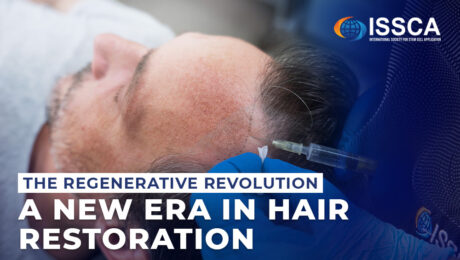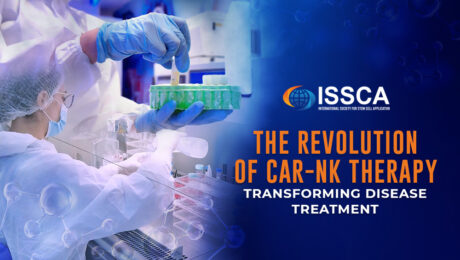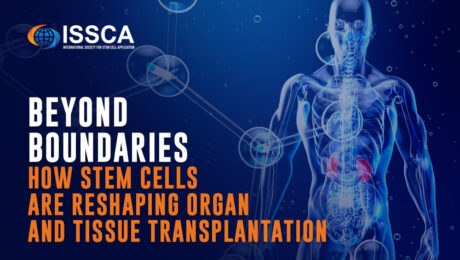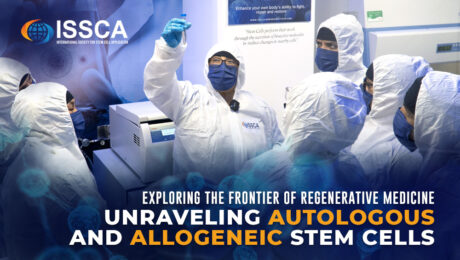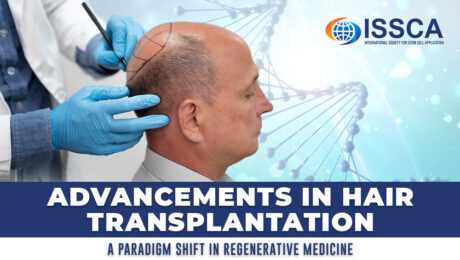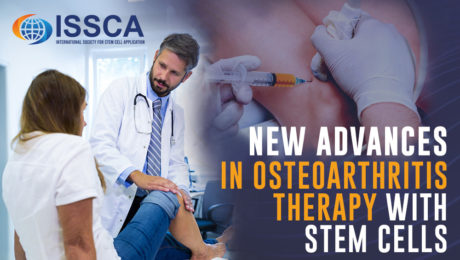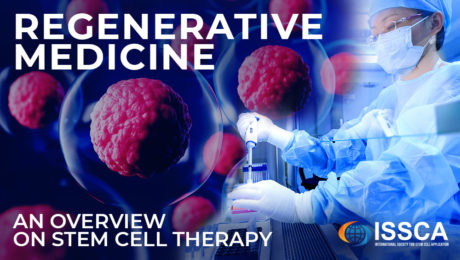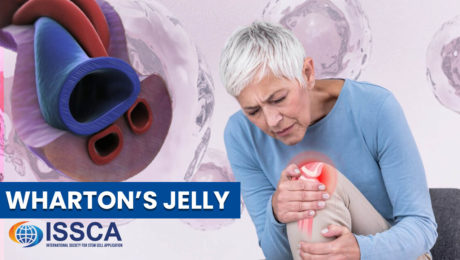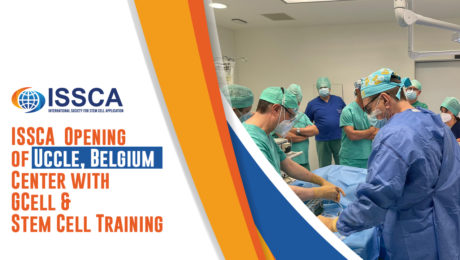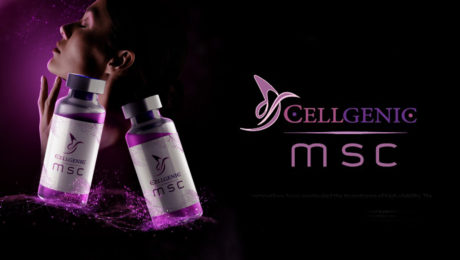The Regenerative Revolution: A New Era in Hair Restoration
The Pursuit of Luscious Locks: Evolution of Hair Restoration
Traditional Hair Transplants: The Old Guard
For decades, methods like Follicular Unit Transplantation (FUT) and Follicular Unit Extraction (FUE) have dominated hair restoration, moving hair follicles from donor areas to balding spots. However, these methods often leave scars and have limited donor hair availability.
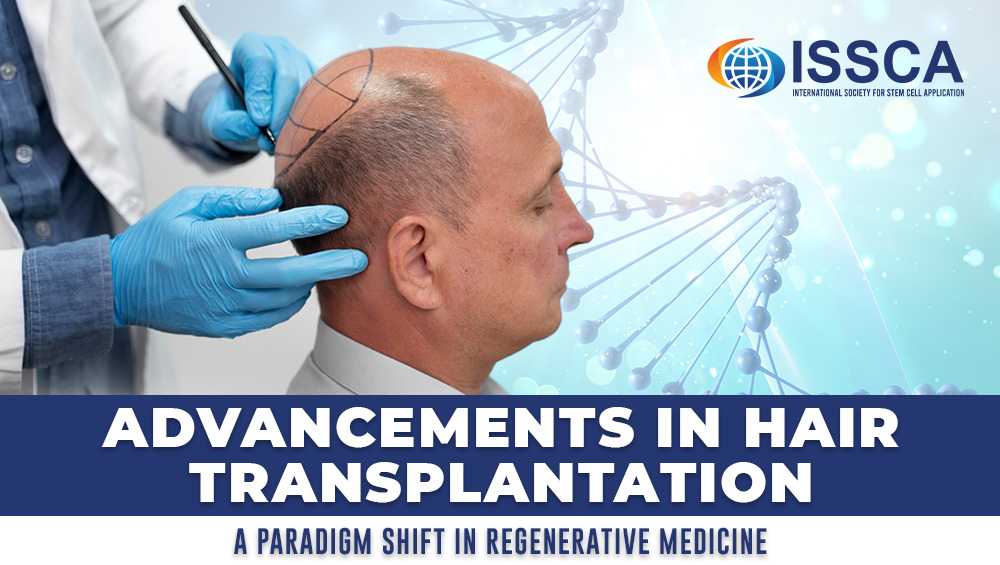
Regenerative Medicine: Revolutionizing Hair Restoration
Regenerative medicine is reshaping hair restoration with innovative approaches:
Stem Cell Therapy: Stem cells can differentiate into hair follicles, potentially stimulating hair regeneration and natural growth when introduced into the scalp.
Platelet-Rich Plasma (PRP): Using the patient’s blood enriched with growth factors, PRP therapy revitalizes hair follicles, promoting improved hair growth and quality.
Exosomes: These cellular vesicles aid in hair growth by reducing inflammation and supporting tissue regeneration, creating an optimal environment for follicle health.
Why This Transformation Matters
The shift to regenerative medicine in hair restoration goes beyond aesthetics:
Scar Minimization: Regenerative techniques minimize scarring, leading to more aesthetically pleasing results.
Enhanced Outcomes: Patients often experience more natural, robust hair growth compared to traditional methods.
Personalized Care: Regenerative medicine allows for tailored treatments that address each patient’s specific needs and hair restoration goals.
The Future of Hair Restoration
Hair transplants are undergoing a revolution with regenerative medicine:
The integration of regenerative techniques promises more natural, minimally invasive, and personalized solutions for hair loss.
Embrace the Future of Hair Restoration
Explore the frontier of regenerative medicine in hair restoration with ISSCA. Discover cutting-edge courses and insights shaping the future of healthcare on our website.
- Published in Blog
The Revolution of CAR-NK Therapy: Transforming Disease Treatment
In the ever-evolving landscape of medical innovation, one breakthrough stands out—a transformative approach known as CAR-NK therapy. This groundbreaking development has the potential to revolutionize disease treatment, offering a safer and more effective solution for patients. Join us as we delve into the five pivotal aspects of CAR-NK therapy, reshaping the future of medical care.
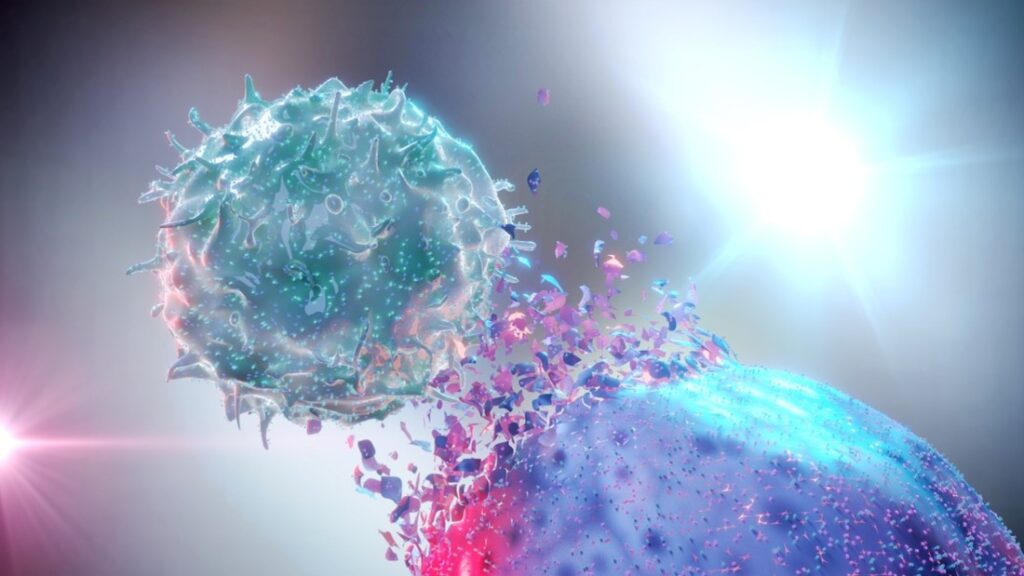
CAR-NK Therapy: Why is it a Game-Changer in Disease Treatment
1. Enhanced Safety and Versatility:
At its core, CAR-NK therapy represents a monumental shift in the treatment of various medical conditions. What sets it apart is its enhanced safety and versatility. Unlike its predecessor, CAR-T therapy, which uses the patient’s own T cells, CAR-NK cells can be derived from healthy donors or stem cells. This distinction significantly reduces the risk of complications, including graft-versus-host disease and cytokine release syndrome, which can sometimes accompany CAR-T therapy. Moreover, CAR-NK cells can be stored and used off-the-shelf, making them more readily available for patients in need.
2. Effective Against a Wide Range of Diseases:
The versatility of CAR-NK therapy extends to its effectiveness against a diverse spectrum of diseases. These remarkable cells possess the ability to target multiple antigens present on various cell types. From hematologic conditions to solid tumors, CAR-NK therapy demonstrates remarkable efficacy. Furthermore, it has the potential to counteract the mechanisms employed by cells to evade the immune system, such as immunosuppression and antigen loss.
3. Cost-Efficiency and Speedy Production:
Another compelling aspect of CAR-NK therapy is its cost-efficiency and rapid production. In comparison to the complex and personalized approach required for CAR-T therapy, CAR-NK cells can be manufactured on a larger scale. This streamlined production process significantly lowers costs, making this innovative therapy more accessible to a wider range of patients. The affordability of CAR-NK therapy brings us one step closer to a future where cutting-edge treatments are within reach for all.
4. A Thriving Field with Promising Potential:
While CAR-NK therapy is still in its early stages of clinical development, the initial results are promising and encouraging. Researchers and medical professionals worldwide are working tirelessly to unlock its full potential. Early trials have demonstrated its safety and efficacy, raising hopes for further breakthroughs in disease treatment.
CAR-NK therapy represents a monumental leap forward in disease treatment. At ISSCA.com, we are dedicated to advancing knowledge in the realm of regenerative medicine. We invite you to explore the transformative possibilities of CAR-NK therapy and its potential to reshape the future of medical care. As we journey together, you’ll discover that the horizon of possibilities in healthcare is continually expanding.
Explore our courses and international congresses at ISSCA.com to deepen your knowledge in regenerative medicine.
- Published in Blog
Beyond Boundaries: How Stem Cells Are Reshaping Organ and Tissue Transplantation
Stem Cells: Pioneers of Regeneration
Within the sacred corridors of medical advancement, a profound transformation is silently taking place, poised to reshape the very foundations of organ and tissue transplantation. Envision a realm where donor shortages and the specter of immune system rejection fade into history, and where medical horizons stretch to unprecedented frontiers. In this immersive voyage, we embark on a journey to unmask the enigmatic power of stem cells in the realm of transplantation, a journey that invites you to witness the precipice of medical progress.
The Choreography of Compatibility
Navigating the intricate choreography of compatibility between donor and recipient is one of the most formidable tasks in transplantation. The ever-watchful immune system often triggers rejection, undermining even the most meticulous transplantation endeavors. Yet, stem cells are orchestrating a symphony of change. Through ingenious techniques, researchers are tapping into stem cells’ immunomodulatory prowess, crafting an environment of harmonious coexistence between donor and recipient. This revolutionary approach not only mitigates the risks of rejection but also broadens the spectrum of viable donors.
A Symphony of Science
The harmony between stem cells and transplantation is not an untested hypothesis; it’s a symphony composed through rigorous scientific exploration. An extensive repertoire of peer-reviewed studies, gracing the pages of prestigious journals such as The Lancet and Nature Communications, underscores the potential of stem cells to elevate transplant success rates. These studies illuminate advancements spanning from refining graft survival to hastening the regeneration of vital tissues, a resounding affirmation of the transformative capabilities underpinning stem cell-driven transplantation.
Embark on a Journey of Revelation
Eager to unravel the mysteries encapsulating stem cell-powered transplantation? We extend a heartfelt invitation to embark on an illuminating expedition through our comprehensive training courses in regenerative medicine. Enrich your understanding under the tutelage of eminent experts, delving into the most recent breakthroughs, evidence-based methodologies, and clinical applications. Step into a realm where the boundaries of medical possibilities are redrawn, where your perception of transplantation is enriched, and where you assume the mantle of a pioneer in the regenerative revolution.
The fusion of stem cells and organ transplantation isn’t confined to the realm of scientific speculation; it represents a monumental stride towards re-scripting the destinies of countless lives. As we venture into an epoch where medical accomplishments redefine our limits, the expedition becomes all the more exhilarating.
Join us at issca.us, where the convergence of science and hope awaits. Immerse yourself in the vanguard of regenerative medicine, where the transformative prowess of stem cells beckons. Together, we shall forge ahead, empowered by the symphony of possibilities, shaping a brighter, healthier future for generations to come.
- Published in Blog
Exploring the Frontier of Regenerative Medicine: Unraveling Autologous and Allogeneic Stem Cells
WEDNESDAY, 06 SEPTEMBER 2023 / PUBLISHED IN BLOG
Exploring the Frontier of Regenerative Medicine: Unraveling Autologous and Allogeneic Stem Cells
In the realm of modern medicine, a groundbreaking field has emerged, promising to reshape the way we approach healing and rejuvenation – regenerative medicine. At the heart of this revolution lie stem cells, the unsung heroes of tissue repair and regeneration. In this comprehensive exploration, we delve into the intricate differences between two crucial types of stem cells: autologous and allogeneic. Prepare to be captivated by the scientific intricacies that underpin these extraordinary cells and discover how they’re poised to redefine medical possibilities.
Autologous Stem Cells: A Personalized Touch
Imagine harnessing the power of your body’s own natural healing abilities. Autologous stem cells make this vision a reality. Derived from your own tissues – be it bone marrow, adipose tissue, or other sources – these cells hold the promise of personalized healing. The process involves harvesting the stem cells, processing them to enhance their therapeutic potential, and then reintroducing them into the body. This “self-healing” approach minimizes the risk of rejection and side effects, making autologous stem cell therapies an attractive option for many.
Scientific Precision
Autologous stem cell therapies are supported by a wealth of scientific evidence. Studies published in esteemed journals like the Journal of Translational Medicine and Stem Cell Research & Therapy have highlighted their potential in diverse applications, from musculoskeletal disorders to cardiovascular conditions. This approach holds immense promise for targeted healing while minimizing the risk of immune system complications.
Allogeneic Stem Cells: A Shared Resource for Healing
In the quest for regenerative solutions, allogeneic stem cells emerge as a game-changer. These cells are sourced from carefully screened donors and subsequently administered to patients. By tapping into a shared pool of stem cells, medical practitioners can provide a standardized treatment option that’s readily available. Allogeneic stem cells hold the potential to address a broad spectrum of conditions, offering a versatile and accessible avenue for regenerative therapies.
Scientific Validation
The science behind allogeneic stem cell therapies is compelling. Rigorous research published in renowned journals such as the Journal of Stem Cells and Development and Stem Cells Translational Medicine has underscored their efficacy in various medical scenarios. This approach not only broadens the scope of treatment but also expedites the therapeutic process, presenting an exciting frontier in regenerative medicine.
Embrace the Future with Knowledge
Intrigued by the dynamic interplay of autologous and allogeneic stem cells in regenerative medicine? We invite you to embark on a transformative journey of discovery through our comprehensive training courses. Our platform offers unparalleled insights into the latest advancements, evidence-based practices, and clinical applications of these remarkable stem cells. Guided by esteemed experts in the field, our courses provide a unique opportunity to stay at the forefront of regenerative medicine’s evolution.
As the horizon of medicine expands to encompass regenerative possibilities, autologous and allogeneic stem cells take center stage. These cellular protagonists hold the key to unlocking personalized healing and broad-spectrum rejuvenation, ushering in an era of medical advancement like never before. Join us in our mission to unravel the mysteries of regenerative medicine and explore the profound potential of stem cells. Visit issca.us today, and together, let’s embark on a journey that could reshape the landscape of healthcare for generations to come.
- Published in Blog
Advancements in Hair Transplantation: A Paradigm Shift in Regenerative Medicine
WEDNESDAY, 09 AUGUST 2023 / PUBLISHED IN BLOG
In the realm of regenerative medicine, hair transplantation has experienced remarkable progress in recent years. As part of a multidisciplinary community of physicians and scientists dedicated to advancing the field, it is essential to stay informed about the latest developments in this area. This blog post aims to provide a comprehensive overview of the cutting-edge advancements in hair transplantation, highlighting the convergence of science, technology, and practice.
Tissue Engineering in Hair Transplantation
The integration of tissue engineering principles into hair transplantation has opened new avenues for regenerative medicine. Scientists are actively exploring the use of biomaterials, growth factors, and scaffolds to create an optimal environment for transplanted hair follicles. By nurturing follicular cells, tissue engineering techniques hold immense potential in enhancing transplantation outcomes and promoting tissue regeneration.
Stem Cell-Based Approaches
Stem cell therapy has emerged as a promising strategy within the realm of hair transplantation. Researchers are investigating the utilization of mesenchymal stem cells (MSCs) and adipose-derived stem cells (ADSCs) to stimulate hair follicle regeneration. These unique regenerative cells promote hair growth and significantly enhance the success rate of transplantation procedures. Ongoing research in stem cell-based therapies continues to unveil their potential to revolutionize hair restoration techniques.
Gene Therapy for Hair Loss
Gene therapy is gaining traction as a cutting-edge approach to addressing hair loss at its core. Scientists aim to develop innovative treatments for both genetic and acquired forms of hair loss by manipulating genes involved in hair growth and regulation. Techniques such as CRISPR-Cas9 gene editing hold immense potential for altering gene expression associated with hair follicle development, offering personalized regenerative therapies.
Nanotechnology in Hair Transplantation
Nanotechnology has paved the way for groundbreaking advancements in hair transplantation. Researchers are exploring the application of nanomaterials and nanoparticles to enhance the targeted delivery of growth factors, drugs, and stem cells directly to the hair follicles. This precise and controlled release optimizes the regenerative potential of transplanted hair follicles, leading to improved treatment outcomes and faster healing.
Artificial Intelligence (AI) and Machine Learning
The integration of AI and machine learning algorithms has transformed various medical fields, including hair transplantation. AI-powered technologies assist in precise hair follicle extraction, optimizing graft placement, and predicting post-transplant outcomes. By analyzing vast datasets and patterns, AI algorithms enhance decision-making, improve surgical techniques, and contribute to personalized treatment plans in hair transplantation.
As active contributors to the advancement of regenerative medicine, staying informed about the latest developments in hair transplantation is crucial. Tissue engineering, stem cell-based approaches, gene therapy, nanotechnology, and the integration of AI and machine learning are reshaping the landscape of hair restoration. By remaining at the forefront of these advancements, physicians and scientists can harness the power of regenerative medicine to effectively treat hair loss and alleviate human suffering.
Join us at issca.us and let us continue to collaborate, innovate, and explore the limitless potential of regenerative therapies.
- Published in Blog
New advances in osteoarthritis therapy with stem cells
FRIDAY, 18 NOVEMBER 2022 / PUBLISHED IN BLOG
Osteoarthritis is a rheumatic pathology that damages the articular cartilage. By joining two bones through the joint capsule, the joints are able to move, providing us with functional autonomy. An inner fluid called synovial fluid is usually found within joints, which is produced by the synovial membrane. Articular cartilage covers the ends of the bones that form the joint. As a result of damage to this articular cartilage, pain, stiffness, and functional impairment occur. Osteoarthritis is the most common joint disorder, usually beginning between the ages of 40 and 50, affecting to some degree almost everyone over the age of 80. Typically, osteoarthritis affects the spine, shoulders, fingers, hips, knees, and toe joints.
Potential of Stem Cell Therapies
Stem cell therapies have the potential to treat a broad spectrum of diseases, including osteoarthritis, rhizarthrosis, diabetes, neurodegenerative diseases, spinal cord injuries, and heart disease. By utilizing stem cells, regenerative medicine is capable of repairing tissues in affected areas. The main difference between lipogem therapy and other treatments for osteoarthritis is that lipogem therapy regenerates cartilage, avoids surgery and its sequelae, and improves the quality of life for patients.
Advances in Sports Medicine and Traumatology
The potential for medical treatments with stem cells and their by-products is currently very high. In the field of sports medicine and traumatology, one of the most outstanding advances has been made for the first time in decades recently: Spanish scientists have achieved a degree of tendon regeneration in 100% of injured patients, resulting in a decrease in pain and a return to sport within two months, and just six months after the trial was completed.
A research performed by the Institute of Regenerative Tissue Therapy (ITRT), published by the prestigious American Journal of Sports Medicine, demonstrates how this therapy regenerates chronic lesions in the patellar tendon and opens up a new therapeutic option for this tissue, which was considered impossible to regenerate.
Adipose Tissue-Derived MSCs
In most patients, fat tissue can be harvested minimally invasively (under local or general anesthesia), providing a highly viable MSC population regardless of donor age. Similar to MSCs derived from other tissues, adipose tissue-derived MSCs have regenerative potential. As osteoarthritis is a very common joint disease, and knee osteoarthritis is the most common form, it is necessary to review scientific literature on osteoarthritis treatments with stem cells, like lipogems.
Lipogems Therapy
Lipogems therapy is a novel procedure that enhances the body’s natural ability to heal itself through the innovative power of science and biotechnology. The Lipogems method involves injecting mesenchymal stem cells into the joints. Adipose-derived mesenchymal stem cells have enormous regenerative potential. They also have a regenerative capacity independent of their age. Even older individuals can benefit from this procedure.
Injection of mesenchymal stem cells into the knee, particularly in the early stages of osteoarthritis, can stop the process of inflammation and degeneration, especially in the less advanced stages of the disease. In addition to preventing progressive physical deterioration of the articular cartilage, this treatment contributes significantly to a patient’s well-being and prevents the installation of knee prostheses.
Patellar Tendinopathy: Physiotherapeutic Treatment and Stem Cell Therapy
Injuries to the patellar tendon that connects the kneecap to the tibia are known as patellar tendinopathy or patellar tendinitis. The patellar tendon works with the muscles in the front of the thigh to extend the knee so you can kick, run, and jump. Athletes who perform frequent jumping in their sports, such as basketball and volleyball, are most likely to suffer from patellar tendonitis. However, people who don’t engage in jumping sports may develop patellar tendonitis. Patients with patellar tendinitis usually begin treatment with physical therapy to stretch and strengthen their knee muscles.
Strength Training and Stem Cell Therapy for Tendinopathies
Strength training with eccentric resistance is one of the most common treatments for tendinopathies. Alternatively, it has been demonstrated that bone marrow-derived mesenchymal stem cells (MSCs) can regenerate injured patellar tendons. Within six months of treatment, it has been observed that the structure of this tissue – which is always difficult to treat – is restored, reaching a regeneration of 40% in all injured persons, with a gradual improvement that eventually becomes complete.
Combination Therapies for Patellar Tendinopathy
It has been found that traditional management methods, including isometric or eccentric exercises, shock wave therapy, and even surgery, are not effective. As part of a rehabilitation program in chronic patellar tendinopathy, autologous expanded bone marrow mesenchymal stem cells (BM-MSC) or leukocyte-poor platelet-rich plasma (Lp-PRP) may be effective in reducing pain and improving activity levels. Traditional management, which includes isometric or eccentric exercises, shock wave therapy, and even surgery, has limited success. A combination of autologous expanded bone marrow mesenchymal stem cells (BM-MSCs) and leukocyte-poor platelet-rich plasma (Lp-PRP) and rehabilitation may reduce pain and improve activity levels in active participants with chronic patellar tendinopathy.
To learn more about stem cells, cellular therapies, and keep up to date with all the information about regenerative medicine and its advances, sign up for our international certification in regenerative medicine at www.issca.us.
- Published in Blog
Regenerative Medicine – An Overview On Stem Cell Therapy
THURSDAY, 10 NOVEMBER 2022 / PUBLISHED IN BLOG
Stem cell therapy is a form of regenerative medicine designed to repair damaged cells within the body by reducing inflammation and modulating the immune system. This phenomenon makes stem cell therapy a viable treatment option for a variety of medical conditions.
What is Stem Cell Therapy?
The term stem cell therapy refers to any treatment involving the use of viable human stem cells, including embryonic stem cells (ESCs), induced pluripotent stem cells (iPSCs), and adult stem cells. Stem cells have the unique ability to differentiate into specific cell types necessary for repairing diseased tissues, making them ideal for tissue and organ transplantation.
The Hierarchy of Stem Cells
In general, stem cells fall into three categories based on their differentiation potential:
- Totipotent Cells: The most basic and capable of forming a complete embryo and extraembryonic tissues.
- Pluripotent Cells (Embryonic Stem Cells): Can differentiate into any of the three embryonic germ layers (ectoderm, mesoderm, and endoderm).
- Adult Stem Cells: Found in specialized tissues throughout the body, capable of differentiating into specific cell types related to their tissue of origin.
Adult stem cells are considered the gold standard for stem cell-based therapies due to their versatility and ability to maintain homeostasis throughout an organism’s lifespan.
Stem Cell Research for Treating Disease
Stem cell research has made significant advancements, particularly with induced pluripotent stem cells (iPSCs), which are generated from adult cells and share properties with embryonic stem cells. This innovation has enhanced disease identification and treatment possibilities, particularly in autologous transplants using patient-matched cells.
Applications of Stem Cells
Stem cells hold potential for treating diseases such as diabetes and heart disease due to their regenerative capabilities. Ongoing research aims to better understand how stem cells can be utilized in regenerative and reparative medicine to effectively treat various conditions.
Future Directions in Stem Cell Research
Stem cell studies continue to expand our knowledge of cell development and regeneration. Researchers are leveraging stem cells to test new drugs, develop model systems for studying normal development, and investigate the causes of birth defects.
To learn more about stem cells, cellular therapies, and new medical protocols using exosomes, sign up for our international certification in regenerative medicine at www.issca.us.
- Published in Blog
Wharton’s Jelly – how does it work?
THURSDAY, 16 SEPTEMBER 2021 / PUBLISHED IN BLOG
What is Wharton’s Jelly?
Wharton’s Jelly is the substance that helps lubricate and support the umbilical cord. What makes Wharton’s Jelly so special is it contains high levels of mesenchymal stem cells. These special stem cells adapt to fit the cells needed to help regenerate damaged tissue and relieve pain naturally.
The Potency of Mesenchymal Stem Cells in Wharton’s Jelly
The mesenchymal stem cells that come from Wharton’s Jelly are among the most potent stem cells, rich in regenerative properties. Wharton’s Jelly also contains a good amount of collagen, hyaluronic acid, and anti-inflammatory properties, making them quintessential in regenerative medicine.
The Role of Regenerative Medicine
Regenerative medicine refers to treatments and medicine that are naturally occurring, including stem cell therapies. Mesenchymal stem cells are harvested from the Wharton Jelly found in the umbilical cord, donated by a healthy mother of a full-term baby. These stem cells contain all the regenerative properties needed to help the body heal and relieve pain naturally.
How Does Wharton’s Jelly Treatment Work?
Mesenchymal stem cells are injected into the body and have the ability to transmute into cells needed to repair damaged tissue and relieve inflammation. These cells harness potent regenerative properties that help rebuild the injured part of the body and provide long-lasting natural pain relief. Unlike pain medicines, which provide temporary relief that masks the symptoms and can be harmful if taken long-term, the stem cells found in Wharton’s Jelly are naturally occurring and natural to the body.
Best Uses for Wharton’s Jelly
Wharton’s Jelly is best used in patients with degenerative diseases and musculoskeletal injuries. The anti-inflammatory and regenerative properties work to repair damaged tissues, leading to lasting pain relief and restored function.
What to Expect from Wharton’s Jelly Treatment
Once a patient and doctor have decided on this type of stem cell treatment, patients can expect a relatively painless process. Stem cells are injected into the site and immediately go to work. Injections are virtually painless, and there are no known negative side effects. Patients can generally get right back to the activities they love. Doctors will discuss treatment plans based on individual needs, and in some cases, resting an injured area for a specific period may be needed.
The Effectiveness of Wharton’s Jelly Therapy
The mesenchymal stem cells found in Wharton’s Jelly have proven to be a very successful therapeutic method to treat several degenerative issues and injuries. This therapy is relatively painless, with no known negative side effects, making it an excellent choice in treatment. Instead of masking the pain with dangerous medicine, stem cell therapy offers a naturally occurring solution that aims to repair the damaged tissue and resolve the problem.
Learn More About Wharton’s Jelly Treatment
If you want to learn more about Wharton’s Jelly Treatment and how you can help your patients, you can check our next training course here: Wharton’s Jelly Training Course.
- Published in Blog
ISSCA Opening of Uccle, Belgium Center with GCell & Stem Cell Training
After several months of organizing and developing a location, the Global Stem Cells Group has finalized the construction of a laboratory and regenerative medicine research center in Uccle, Belgium.
This facility serves both as a regenerative medicine treatment and research center, but also as a plastic surgery clinic. In addition to this, one of the primary goals of the Center is to serve as a place for the fostering of knowledge and experience regarding the different products and equipment required for the application of cellular therapies. As part of the inaugural ceremony a group of physicians were trained in the setup and use of the various regenerative medicine protocols and application process of these cells into the patients.
This center is a push into Europe for the Global Stem Cells Group. As the science advances, newer and more advanced therapies and technologies are being developed and released into the market with each passing month.
With the European Union being one of the largest consumer markets in the world, the finalization of a brick-and-mortar location in Brussels, Belgium is one that will mean great things for the Global Stem Cells Group, and the presence and proliferation of regenerative medicine throughout Europe and the world.
“This was a wonderful opportunity that we could have. It goes to show that even during this pandemic, the medical community is one that is still going strong. We’re still rallying together to look for new breakthroughs, and come up with the most beneficial treatment options for patients,” Said Benito Novas, founder of the International Society for Stem Cell Applications, “In addition to this, it also provides an excellent platform for the distribution of regenerative medicine therapies and equipment, including the revolutionary new GCell Machine,”
Indeed, the inaugural training at the Stem Cell Center in Uccle, Belgium was one that covered both of the more traditional methods of stem cell isolation and application– adipose and bone-marrow derived autologous cells, but this training was also one of the first in which the company had the ability to demonstrate the novel GCell Machine. Using a precise system of blades and filters, it is able to process a stem cell sample from adipose tissue in less than half of the time that it would take a physician to do so through traditional means.
This allows the patient to be more comfortable throughout the shorter procedure, as less anesthesia is also required than when operating under traditional means. The GCell is a minimally invasive, portable machine that allows physicians to fully unlock the potential of regenerative medicine as a component in their practice. Using their global network of distributors and licensed vendors, Global Stem Cells Group is working fervently to ensure no interruption in the global availability of the most cutting-edge regenerative medicine products.
- Published in News
How Cellgenic MSCs Revolutionize Regenerative Medicine
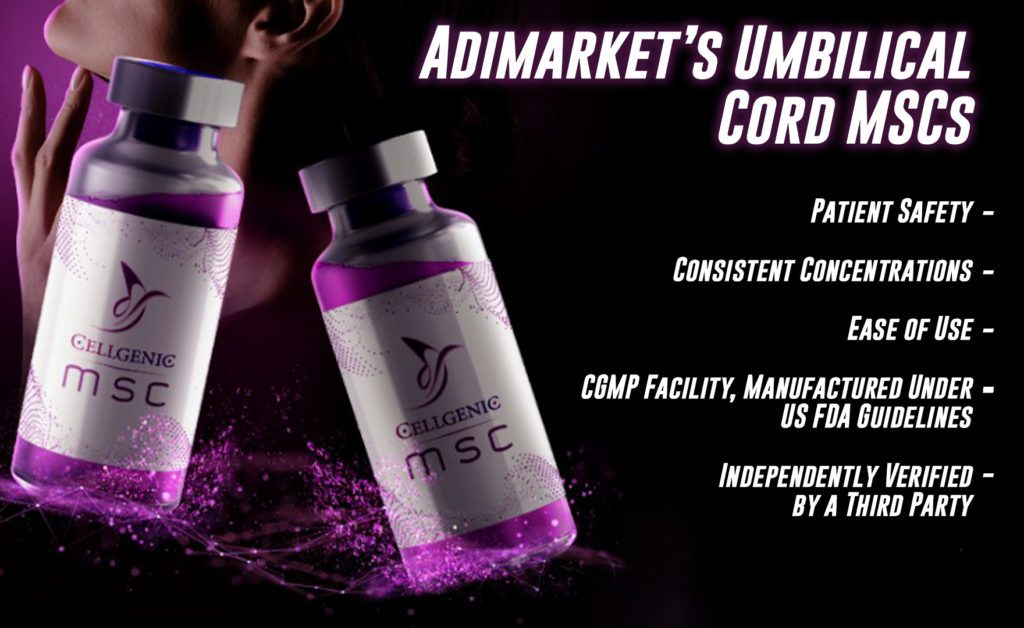
Stem Cells are revolutionizing the field of regenerative medicine, due to their intelligence. Once administered into the patient, they are able to identify and target areas of disease and damage. Adimarket’s Mesenchymal Stem Cell Product excretes growth factors, cytokines, and proteins, which all play a key role in the regeneration of tissue. Their anti-inflammatory and immunomodulatory properties mean that it is difficult for them to be rejected by the body. Additionally, they increase blood flow to the vital organs which need it the most.
Many proprietors of MSC products will claim that it is not necessarily important to have a high ratio of viable cells. They claim that it does not matter how many cells are ‘not viable’, or dead, so long as there is a high enough number of viable cells– however, current research has shown that this is not the case. These dead cells are detectable by the immune system, and it is believed that they can create an inflammatory response within the body at the treatment area, which would lower the effectiveness of the regenerative medicine treatments.
This bending of the science is harmful to our industry, which is why knowledgeable purveyors put one thing above all else– consistency. Our cellular concentrations are the same throughout each batch, and we make sure that there is a high ratio of viable cells. All of our samples are independently verified by a third party laboratory, and have been selected for their phenotypic and genotypic profile, characterized for optimum growth and stability. When the proper care is taken, Mesenchymal Stem Cell products have been identified as having the highest output of growth factors and stem cell factors among the current standards of care– as well as properties of angiogenesis, immunomodulation, and the potential for endogenous repair.
Cellgenic has been working for over a decade, constantly reinventing itself and reinforcing the products that we offer with the latest advancements in the field of regenerative medicine. We take every painstaking measure possible to ensure that the cellular samples that our customers use to treat their patients are second to none– this includes the consistent concentrations of our sample, which are the same throughout ensuring that every patient gets the same treatment. We offer the product in 10 million or 30 million live total nucleated cells, where other fabricators would have the same number of total cells. We ensure that every single product that we send out has been tested for low amounts of annexin, which is a cellular protein which serves as a marker for cell death.
All our Mesenchymal Stem Cell products come in 1cc vials cryogenically preserved– they are shipped overnight within the United States, conveniently delivered to your door in the morning. For use, the product is passively thawed between the palms of your hands– and ready to use when your patients are. MSC 10 contains 10 million live cells and is recommended for a single joint, or a small area. However, the MSC pure pro has 30 million live cells,and can be used for larger applications, or for up to three joints in the same patient at the same time.
If you are interested in finding out more about Cellgenic MSCs, you can send an eMail to info@stemcellsgroup.com
- Published in News


